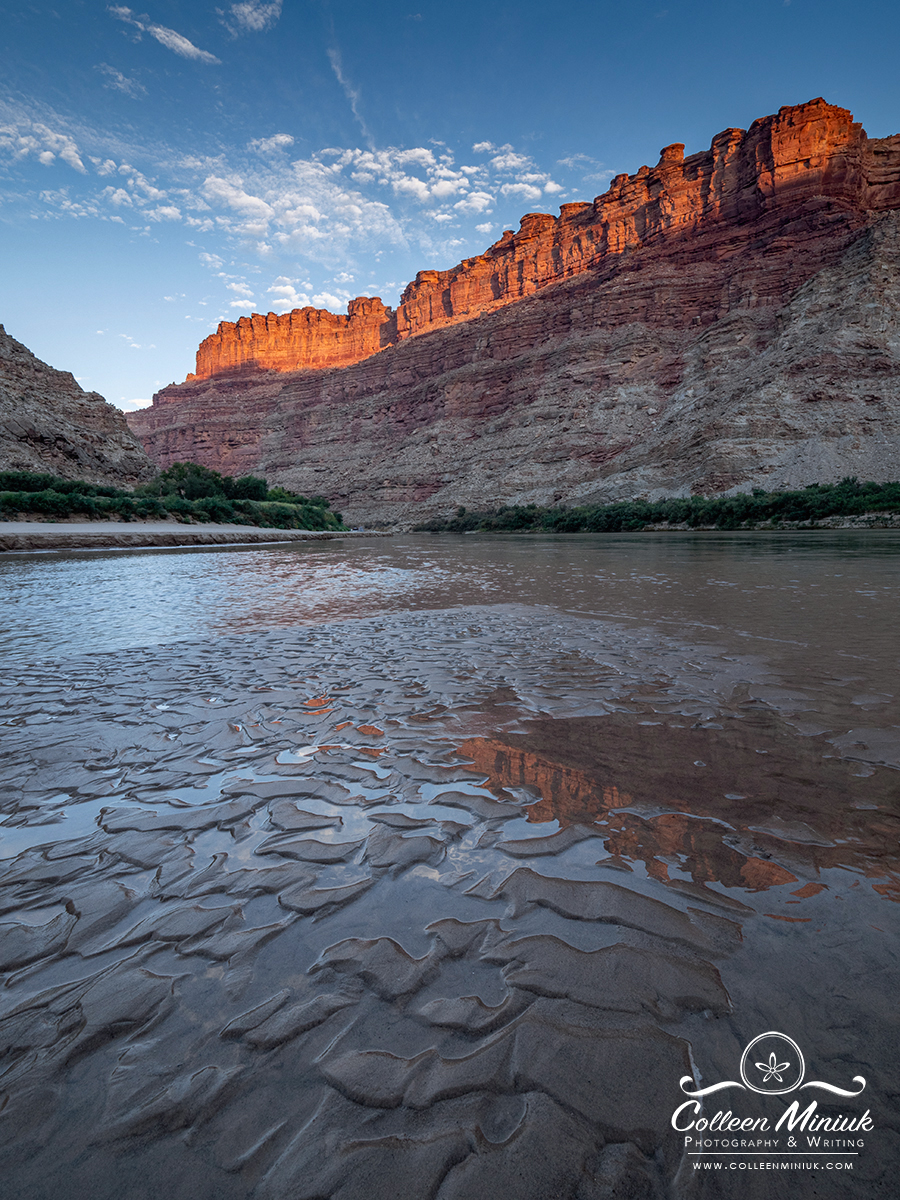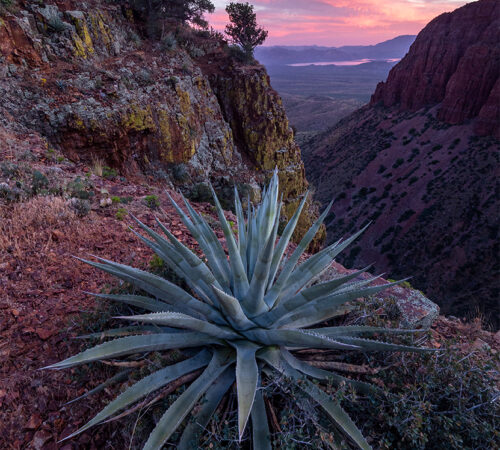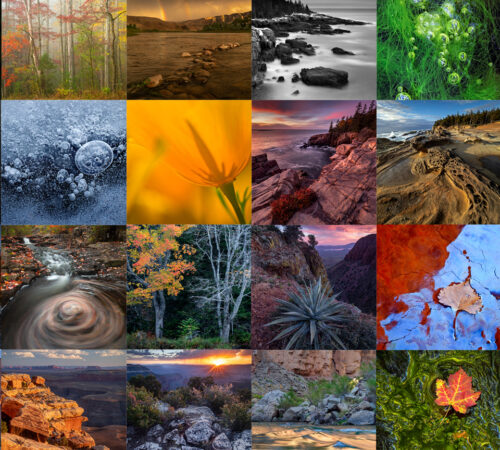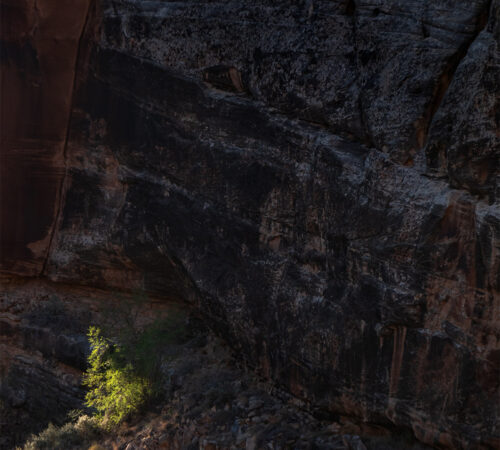Staying Safe in the Backcountry

Dear Bubbles:
With your trip into the heart of the Kaibab [Plateau] and your solo SUP in Canyonlands [National Park], I’m thinking you should do an article about planning, preparation, and safety in the backcountry. I know you carry an InReach. What other precautions do you take?
~Ray
Dear Ray:
In 2009, while hiking around a remote canyon in southern Utah called Fortknocker Canyon, a friend of mine lost his footing on a crumbling piece of sandstone and fell—head-first—over the edge of a 10-foot cliff. I rushed after him to the rim and looked down. I couldn’t make out his face—it was covered almost in blood—but he was moving and swearing.
He quickly confirmed his ability (and desire) to walk out on his own, so we made the 1.5-mile hike to the trailhead. I carried both my and his backpack, which slowed me to his pace. In an effort to save time, we decided to not retrace our drive on the 12 miles on a fairly decent dirt road back to the main highway. Instead, we chose to press out luck on a shorter track in the opposite direction. Two problems with this: one, we had no idea what condition the road was in—the map had it labeled “4WD”—and two, I didn’t know how to drive his stick-shift car—and had to since we were sure if he had a concussion or not.
We managed to make it through rocky steep sections and a hairy wash crossing to get to the highway. Three hours later, we arrived in Blanding only to be told we would have to continue on another 20 minutes to Monticello where they had an CT scan machine to determine if my friend had serious head injuries. The second I pulled into that parking lot, knowing my friend was in better care, I broke down in tears.
My friend ended up with “just” few stitches, a couple broken ribs, and fortunately no concussion. He was lucky that day. So was I. In hindsight, I made so many errors, ones that could have led to a much different, and dire, outcome.
For example, we had no personal locator beacon with us to use in an emergency. Had my friend been knocked unconscious or been more seriously hurt, it’s plausible he could have died out there waiting for someone to find us. Given our remote location, it would have taken days. I used up all our water cleaning the blood from his face in the field. Seeing that much blood terrified me, and I think I subconsciously believed that if I made it disappeared, everything would be fine. I should have conserved our precious water had we needed to spend a night outside. (And now I know heads bleed a lot even in minor injuries.) I didn’t know at the time that Bullfrog Marina, just two hours away from the trailhead, had medical facilities. An hour’s time could have made a difference in his injury and recovery. Although he ended up with injuries not necessarily requiring immediate care, potential head injuries should always be treated as urgent.
This accident–which is the worst thing I’ve endured in all my time outside–didn’t deter me from my excitement for backcountry travel. I did, however, vow I would never, ever, ever travel to the backcountry—alone or in a group—without adequate preparations. After the trip, I immediately picked up a SPOT device, took Wilderness First Aid, and ensured I knew of the closest medical facility and town anywhere I went. Ever since, I’ve made damn sure I’d never make the same mistakes again, that I’d treat the outdoors with the respect it deserved and that I’d take responsibility for taking care of myself out there to the best of my abilities. Now, whether I plan to do a 47-mile solo paddle on the Colorado River through Meander Canyon or a reconnoiter of the remote Kanab Creek Wilderness Area (to the west of the Kaibab Plateau) with my parents, I try to prepare for the worst-case scenarios.
Here are some of the precautions I’ve learned to take before venturing out in the wild:
Research the area extensively before leaving: I scour maps, both printed and online to understand not only access (i.e. roads) in and around the area but also what the terrain looks like. By reading topo maps, I visualize what the land will look like—cliffs, hills, valleys, plateaus, etc. I also learn about the geology, which often tells me the make-up of the roads. For example, when the area is comprised of Navajo Sandstone, you can bet the roads will be sand, sometimes deep sand, with harder sandstone ledges. If it’s volcanic, it’s likely to be a mix of ash and sharp basalt rocks. I’ll learn as much as I can from talking with park rangers, forest service personnel, outfitters—people who are literally paid to know their area. Reading other travelers’ accounts to understand their experiences can also help fill in details of what you might expect.
Leave a travel plan with family and friends: Leave a day-by-day plan of your expected destinations. Have a conversation about what other options you might take as well. Talk about when your family and friends should—and shouldn’t—get worried if they see an anomaly. Keep solo travel plans out of public knowledge for your safety, but be forthcoming with authorities and outfitters. I told only my family and a select few of my friends I planned to paddle on my own. When I was on the river, though, I made sure the jetboat driver knew I was alone and when I expected him to pick me up (in case I didn’t show up in the right place at the right time). I also made it clear to the National Park Service ranger, who pulled up in his speedboat next to me on day 2 of my trip, of my plans.
Travel with other people: Photography is frequently a solitary sport for me, but if I don’t know the area first-hand and I know from my research that I could encounter tricky terrain or conditions like deep sand, steep and rocky terrain, mud, water crossings, etc., I’ll invite my family or friends to go with me. Not only is there safety in numbers, but having an extra vehicle on hand to drive into civilization for a new tire, oil, or other emergency supplies can provide much-needed assistance.
Carry a satellite messenger or personal locator beacon with SOS capabilities: After years of poor performance by multiple SPOT devices, I carry the Garmin InReach, a satellite messenger. This device lets me communicate via text via preset or custom messages during my trip. It also allows me to turn on tracking which shows my family and friends at home where I’m at at any given time (who know to call the authorities if I’m supposed to be in Utah and suddenly end up in Florida). The InReach also has an SOS button, which triggers local authorities, for emergency situations.
Sign up for AAA: I once locked my keys in my truck while camping five miles down a dirt road. Fortunately I picked up cell phone service in my camp and called AAA to help. Within an hour, AAA had resolved my dilemma. I aim to be self-sufficient in the wild, but it always helps to have back-up help available like AAA who can help with tires, gas, keys, and other road-related problems so long as you aren’t too far off-road. (After this incident, I learned how to open my vehicle using an app on my phone. And got a spare key, too.) Note that AAA would not have resolved any issues we may have had in Kanab Creek Wilderness. Hence, the second vehicle.
Complete Wilderness First Aid or Wilderness First Responder classes and maintain your certifications: You are responsible for your own safety in the backcountry. Period. End of story. Help is usually hours away and rescues put a lot of additional people’s lives at risk. Know how to handle non-life-threatening situations in the field on your own. I recently completed a Wilderness First Responder (WFR) class after holding First Aid/CPR/AED certification for years. I should have taken it sooner. The extra money and time for the WFR is absolutely worth it if you spend any time whatsoever in the sticks.
Carry safety gear for yourself: On my checklist of things to bring to keep me safe out there include a headlamp, well-stocked first aid kit, emergency blanket, hand warmers, my Inreach, knife, leukotape, duct tape, bug spray, sunscreen, extra food, extra water, bear spray (if appropriate to the location), and self-defense equipment (e.g. mace, taser, or gun). I also bring peppermint oil to keep the mice out of my camper. If I’m paddling a river or lake, I’ll be sure to also have an extra paddle, extra pump, and repair kit for my board. If I’m alone, I never have a single point of failure for life-critical fear like water filtration systems and solar panel charging capabilities. I bring at least one back-up for each. Bringing duplicate gear requires me to travel heavier than I would if I were with other people, but it’s a small price to pay for a little added safety.
Bring safety equipment for your vehicle: To assist with possible vehicle issues, I carry an air compressor, tire repair kit, tow strap, folding shovel/spade, axe, extra screws, bolts, and D-rings, tool set, bungee cords, wire, wire cutters, WD-40, and extra batteries (and know how to use them all=important!). Duct tape can get you far! I’ve used my floor mats under my tires as traction devices to get me out of a sketchy situation deep sand. I’ll thrown in snow chains if I’m expecting wintery conditions. Perhaps the most important and useful gear related to my truck, though, is my Micro-Start by Antigravity Batteries. Just this summer, as I tried to leave a dispersed camping area at least 20 miles from cell phone service, my truck wouldn’t start. After mildly freaking out, I pulled out my Micro-Start XP-10 (for heavy duty vehicles) and jumped my truck. Problem solved! (Thankfully! Boy, I was nervous for a few minutes, though…) When AAA later replaced the battery in my driveway, the representative said my six-year old battery was “deader than a dinosaur.“ Which leads me to the next bullet point…
Keep your vehicle in tip-top shape. I don’t miss an oil change. I monitor my tire treads constantly (and buy the high-end heavy-duty BF Goodrich All-Terrain tires). If I hear a strange noise or see liquid where it shouldn’t be, I bring it in for service. I somehow lost track of time with my six-year old battery, but I won’t in the future! Treat your vehicle to consistent preventative care and it’ll take good care of you out there.
Stay flexible: No amount of planning can take the place of responding to reality. Conditions constantly change in the backcountry, especially due to weather. Roads are frequently not maintained by the managing agency. If I come upon a tricky situation out in the field, I’ll stop my vehicle and walk the road to study the obstacles. If I see something I don’t feel comfortable with, I’ll turn around and find another way or do something else.
Remain calm when things go wrong. Things can and do go wrong out there. Panicking has yet to solve any problem on this planet. Take a deep breath and keep a cool head on your shoulders. Consider your options before making a decision on how to resolve your troubles. When I popped my tire at Toroweap, I was seconds from turning around and driving to Kanab to replace my tire when the park ranger came by to check on me. He encouraged me to stay, to see Toroweap, while he attempted to plug the gaping hole in my tire. (It took five plugs…I saw Toroweap, but I drove to Kanab on my spare.) If you need a distraction, set your camera up on a time-lapse to record your disaster (so long as it is safe to do so). It’ll make a good story later, I assure you! (Case in point: “My “$281 (and Four Beer) Trip to Toroweap.”)
Trust your intuition: If you feel uneasy about anything in the outdoors, trust your gut! I’ve driven hours to a trailhead, excited to take a hike, but have driven right back home after seeing a sketchy vehicle that made me unsettled for no obvious reason. Please hear this loud and clear: Bailing on your plans because something doesn’t feel “right” is not overreacting. It is not silly. It is smart. You’re keeping yourself out of trouble, possibly even alive, by listening to yourself.
For those who have never traveled down a dirt road, but may wish to try, know that traveling in the backcountry is an acquired skill. I’m not what you’d call a lifelong wilderness girl. While I spent half of my childhood in Little Rock, Arkansas, climbing trees, splashing in creeks, and trying to kiss frogs, I hadn’t slept in a tent in the backcountry until 1997 when my ex-husband and my best friend dragged me (yes, dragged me) to Joshua Tree National Park. I’ve obviously become more comfortable now with wandering in the wild since then to the point of craving it and doing it over half the year. My point is, if I can do this, so can you too if it’s something you wish to try. Start with day outings close to home. (For those interested in solo travel, check out my “Going Solo” post). Like all things, you’ll get better every time you venture out. Adequately preparing ahead of time, though, can go a long way to keeping you out of catastrophic trouble.
Be well, and go wild,
~Bubbles
Have a question about photography, art, and/or the creative life? Need some advice? Looking for inspiration? Send your question to Dear Bubbles at colleen@colleenminiuk.com to be possibly featured in a future column post. (If you’d prefer a different display name than your real first name, please include your preferred nickname in your note.





One Comment
PaulB
I just checked your Dear Bubbles website for my weekly dose of photography info, having come to appreciate your extensive knowledge, insight, and clear and comprehensive (to say the least) writing. On looking at the comments section of last week’s article about staying safe, I was amazed to find zero comments. I had expected many laudatory ones. That article addressed a real need, and did it in (your usual) encyclopedic fashion, leaving no topic or detail lacking. GREAT JOB! I’m sure you saved your readers substantial distress, maybe even a life or two. I couldn’t believe no one responded to the article. Maybe they were out buying GPS devices, battery chargers and duct tape.
That article would be a valuable addition to Outdoor Photographer, Backpacker, and other print magazines, as well as to other websites like Photography Life. I would guess that Dear Bubbles flies under most photographers’ radar, and undeservedly so. I imagine you know how many hits it gets. How is it going?
I became a fan of yours after buying the Acadia book soon after its publication. I found the extensive research and recommendations, precise descriptions of photo ops and how to find them (GPS, clearly describing unmarked trails and how to find them) and great photos to put that book in a class by itself. Bob Hitchman would be proud.
After that, you were not to be found in the websites I visit or the increasingly few photo magazines I read, until I stumbled across a listing for you in a photo workshop I saw somewhere, can’t remember where. Remembering you from the book, I Googled and found you and your website and finally checked out Dear Bubbles, which is a lot more serious and worthwhile than one might guess by its title.
And I like gin and chard as much as anyone. Suggested alternative or subtitle: Oracle of Photographic Knowledge. You answer questions more thoroughly and in a more lucid and helpful fashion than anyone.
So – I congratulate you on a job very well done and wish you success. I would help if I knew how. (What is Nasim Mansurov’s email? You’re both IT people turned photographers…)